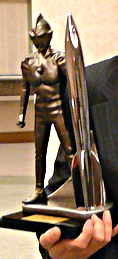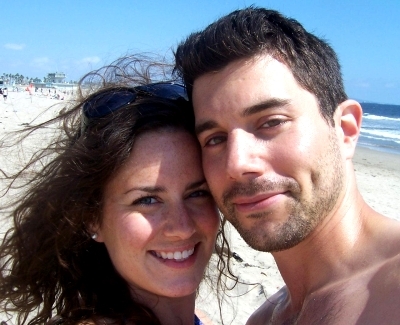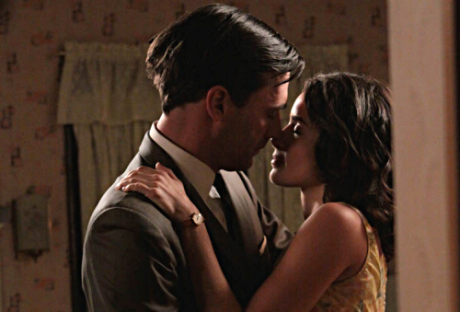I Ruined Blogging for the St. Augustine Record
Peter Ellis, the editor of the St. Augustine Record, recently began a blog with an angry post that suggests he is starting his new site under duress:
My first encounter with a blogger was a miserable experience. He reported stuff on his blog about The Record that was wrong and then urged bloggers across the country to write me to complain. Many of them did, even though most of them had never heard of the St. Augustine Record.
That left a bad taste in my mouth about bloggers. Since then, I've read quite a few blogs and, with some delightful exceptions, most are awful. So I enter the world of blogging gently, knowing that many who have gone before me have failed.
My goal is to write about what happens in the newsroom, why we make the decisions we do and, I hope, get into a conversation with you about The Record and our work. I won't write about my family, my dog, my old convertible and my golf game. They all fascinate me, but I'm pretty sure they won't do the same for you.
What I will talk about is journalism at The Record. I hope you'll join me in the conversation.
He's talking about me. In 2007, I wrote about the Record when it tried to expose the identity of a local blogger who was critical of a county commissioner, and my story was linked by Romenesko, attracting attention from some journalists and bloggers across the country. I posted a follow-up about how Ellis was telling people that the blogger was a front for an organized group but the paper never ran a story revealing his identity or that of the supposed group.
As a longtime reader of the Record, I thought it was inappropriate for the paper to release its own security video of the unnamed blogger, who had bought a display ad in the paper to get his message out, and conduct a manhunt as if he was a criminal. The factual basis for the ad was backed up by the paper's own reporting.
When Ellis posted a comment on my blog, I contacted him to confirm his identity and we got into a bitchy email exchange. He told me "you don't have a lot of credibility with me," I responded that my web traffic could beat up his web traffic and he kept telling me that my blog was incorrect without pointing out any actual error. He finished the exchange with this comment: "You're wrong across the board, and you know it. Please don't write to me anymore."
So now I learn that not only was I wrong in some still-unspecified way, but my wrongness proved to be a formative experience for him.
This isn't the first time I've made a professional journalist mad about what I wrote on Workbench, which I enjoy because turnabout is fair play. But I didn't encourage people to complain to Ellis. I just related the facts as I knew them, gave my own opinion and some bloggers evidently contacted him because they objected to what his paper was doing. It's ironic that a journalist with 37 years experience would play shoot the messenger when he doesn't like the consequences of somebody else's reporting.
Although this would appear to be another battle in the war between journalists and bloggers, as I begin my eleventh year of blogging I don't think the distinctions matter any more. He appears to see bloggers as a self-fascinated and awful group, but these days millions of people have blogs, Twitter accounts and social media sites. Everybody gathers and shares information. The world I went to college for, in which a trained priesthood of journalism school graduates are the primary dispensers of the news, doesn't exist any more.
I enjoyed the days when profits were fat and journalism jobs were plentiful, but I'm glad to live at a time when any outspoken person with a web site has the opportunity to put the local newspaper editor on the defensive.
CDC Official: Vaccine Distribution Remains 'Bumpy'
The shortage of H1N1 swine flu vaccine in some parts of the country continues to be a concern of the federal government's vaccination authorities, immunologist Anne Schuchat said this afternoon during a briefing for bloggers on the pandemic. "This has really been bumpy," Schuchat said as she fielded questions from California and other places where supplies of the vaccine has been extremely difficult for people to find. "As of today, 58.9 million doses of H1N1 vaccine have become available for the states to order."
 I participated in the hour-long "bloginar," which was held by the Department of Health and Human Services. Schuchat, the director of the National Center for Immunization and Respiratory Diseases at the Centers for Disease Control and Prevention, answered questions for an hour submitted over email and Twitter.
I participated in the hour-long "bloginar," which was held by the Department of Health and Human Services. Schuchat, the director of the National Center for Immunization and Respiratory Diseases at the Centers for Disease Control and Prevention, answered questions for an hour submitted over email and Twitter.
There are 43 states in which influenza is categorized as widespread, compared to zero at this time in a normal year, she said. Children, pregnant women and health care professionals are among the high-risk groups urged to get vaccinated. She encouraged bloggers to share a Flu Vaccine Locator widget from its Flu.Gov web site, which helps people find the vaccine in their area.
When asked about the safety of the swine flu vaccine, Schuchat said that it's no different than the seasonal flu vaccines that have been offered for years. "It is produced exactly the same way," she said. The companies that are producing the vaccine use the same production process and undergo "the same kind of oversight with FDA inspections and visits."
Another blogger asked about the decision not to include an adjuvant in the vaccine. Adjuvants are "substances that are put in vaccines to improve the immune response," Schuchat explained. The federal government bought adjuvant to store in case it was needed, but has found that the normal 15-microgram dose of antigen in the current swine flu vaccine has been sufficient.
Current vaccine producers are not licensed to include an adjuvant in the United States, she said. This means that an "emergency use authorization" would have been required to make use of them to fight swine flu. "We worried that the use of adjuvants at this point wouldn't be acceptable to people," she said.
I posed this question to Schuchat: What can you say to address the concerns of people who believe the long-term health effects of flu vaccines have not been adequately studied?
Schuchat replied that "influenza vaccines have a very good safety track record," pointing out that 100 million doses are dispensed per year. "I'm not aware of any problems about long-term safety." The National Institutes of Health are funding studies to observe whether any concerns arise for pregnant women who have been given the swine flu vaccine this year.
As someone who's gotten vaccinated along with my wife and children, I was passing along a concern raised by a reader on the Drudge Retort. I've been surprised by the number of people who get the yearly flu shot but have been hesitant to get the swine flu vaccine. The vaccine is currently available in several places here in St. Augustine and Jacksonville, though I have friends and family in Texas and California who can't find it anywhere.
An archived broadcast of the briefing can be viewed on Flu.Gov, which has other resources for people who have questions about the flu pandemic and vaccine. The site has a self-evaluation tool for people who are battling flu-like symptoms and a fraudulent H1N1 products widget that a DHHS official urged bloggers and social networking users to share.
The Danger of Employing Redskins as Movie Actors
Although it's getting a lot of flak from publishers and authors, Google Books is one of the most amazing contributions to world knowledge launched on the web in years. The ability to search the full text of thousands of books published prior to 1923 -- and hence in the public domain -- is amazing. I've been poking around it for a while, and I found something today while studying how Americans used the term "redskins" before Washington's NFL team chose that repulsive racist mascot in 1933.In the 1915 book Making the Movies, author Ernest Alfred Dench wrote a section giving advice to filmmakers on hiring Native Americans as actors. Here it is in full:
The Dangers of Employing Redskins as Movie Actors
It is only within the last two or three years that genuine Redskins have been employed in pictures. Before then these parts were taken by white actors made up for the occasion. But this method was not realistic enough to satisfy the progressive spirit of the producer.
The Red Indians who have been fortunate enough to secure permanent engagements with the several Western film companies are paid a salary that keeps them well provided with tobacco and their worshipped "fire water."
It might be thought that this would civilise them completely, but it has had a quite reverse effect, for the work affords them an opportunity to live their savage days over again, and they are not slow to take advantage of it.
They put their heart and soul into the work, especially in battles with the whites, and it is necessary to have armed guards watch over their movements for the least sign of treachery. They naturally object to acting in pictures where they are defeated, and it requires a good deal of coaxing to induce them to take on such objectionable parts.
Once a white player was seriously wounded when the Indians indulged in a bit too much realism with their clubs and tomahawks. After this activity they had their weapons padded to prevent further injurious use of them.
With all the precautions that are taken, the Redskins occasionally manage to smuggle real bullets into action; but happily they have always been detected in the nick of time, though on one occasion some cowboys had a narrow escape during the producing of a Bison film.
Even to-day a few white players specialise in Indian parts. They are pastmasters in such roles, for they have made a complete study of Indian life, and by clever make-up they are hard to tell from real redskins. They take leading parts, for which Indians are seldom adaptable.
To act as an Indian is the easiest thing possible, for the Redskin is practically motionless.
Predicting the Next Hugo Award-Winning Novel
 For the last two years I've voted in the Hugo Awards, yearly literary honors for science fiction and fantasy (but mostly science fiction). I skipped the best novel category because I hadn't read most of the works, which is no fun at all since that's the biggest award. So when the 2010 Hugos are decided next spring, I'd like to have completed enough of the nominated novels to make an informed vote.
For the last two years I've voted in the Hugo Awards, yearly literary honors for science fiction and fantasy (but mostly science fiction). I skipped the best novel category because I hadn't read most of the works, which is no fun at all since that's the biggest award. So when the 2010 Hugos are decided next spring, I'd like to have completed enough of the nominated novels to make an informed vote.
This won't be easy, since I only read around one book a month. But after digging into the history of the awards, I've found that most best-novel nominated authors have been there before. If you're nominated for one novel, you have a pretty good shot that your next will be nominated as well. During the past decade, 34 out of 50 nominees were retreads. Here are the only first-timers over that period:
- 2000: J.K. Rowling
- 2001: Nalo Hopkinson, Ken McLeod, George R.R. Martin
- 2002: Neil Gaiman, China Mieville
- 2003: None
- 2004: Charles Stross
- 2005: Iain M. Banks, Susanna Clarke, Ian McDonald
- 2006: John Scalzi
- 2007: Michael F. Flynn, Naomi Novik, Peter Watts
- 2008: Michael Chabon
- 2009: Cory Doctorow
There are currently 68 living Hugo-nominated best novel authors, ranging in age from Naomi Novik at 36 to Frederik Pohl, who turns 90 next week on Nov. 26 and recently began his own blog. I put together an Amazon wish list of 22 novels by these authors coming out this year, leaving off some books that have no shot at all, such as book five in a genre series and every co-authored novel except for David Niven and Jerry Pournelle's Escape from Hell, the sequel to their 1976 Hugo-nominated novel Inferno.
I'm guessing that four out of five Hugo nominees and the eventual winner are on this list. I recently finished Transition by Iain M. Banks and began reading This is Not a Game by Walter Jon Williams, who was nominated 11 years ago for the novel City on Fire.
If you'd like to vote in the Hugos, all that's required is to become a supporting member of the next WorldCon science fiction convention before voting begins. A supporting membership in AussieCon 4, the 2010 WorldCon in Melbourne, Australia, currently costs $50 and can be upgraded later if you decide to attend. One cool perk of being a Hugo voter is that you're sent ebook copies of most nominated novels and many other nominated works for private review. Unfortunately, by the time they arrive you only have a few weeks in which to read them.
I'll be posting a review of Transition later this week.
Credit: The photo of a 2007 Hugo Award statue was derived from a photo taken by Doctorow available under a Creative Commons license.
They're Gonna Put Me in the Movies

I haven't seen the film Paranormal Activity, but I did fill out a web form requesting that it be shown in my town. That's apparently enough for me to earn a spot in the credits of the film when it comes out on DVD.
I got an email inviting me to add my name to the credits, and if you click the link the invitation will be extended to you as well.
After I filled out the form, I was shown a list of other people who are going to be credited. The list was 3,346 people long when I saw it, and included such film industry luminaries as Jeff "PocketPair77" Sugimura, Nisha Hookerpie, Michael "Shrek" Taylor, Daniel "Better Than Josh Levine" Newman and Jerry S 956 aka IVVI Wargasm. No, I don't know who those people are either.
It's not clear what my credited job is, but if there were any animals or insects involved in the production I could wrangle them.
I'm hoping this credit helps me get into IMDB.
Is Miss Farrell Crazy on Mad Men?

I've become an obsessed viewer of Mad Men this season, catching each episode on its first Sunday night airing and hitting the web afterwards to read reactions. The best place to do this is the blog of New Jersey Star-Ledger television critic Alan Sepinwall, who posts an extremely long critique of each episode that attracts hundreds of interesting comments.
For several weeks, Sepinwall's readers have been increasingly critical of Suzanne Farrell, the outspoken young teacher who is Don Draper's latest hoochie mama. They think she's "cuckoo bananas" and a Fatal Attraction waiting to happen, which I find to be a weird reaction.
I posted a comment along those lines Sunday night, asking this question, "When did an assertive woman who is open and direct about her feelings and clear about her needs equate to crazy? Particularly in the world of Mad Men where the cost of repression is made so abundantly clear."
Sepinwall responded: "I think the drunk-dialing scene in 'The Fog' and the eclipse scene in 'Seven Twenty Three' provided enough in-show evidence for people to at least wonder if something is off about Miss Farrell, if not know for sure that there is."
Though subsequent episodes may prove me wrong, I think Farrell makes viewers tense because she's more self-aware than any of Draper's previous conquests. This trait makes it harder to believe that once they're over, she'll go quietly into that good night.
But it does not make her a bunny boiler. Farrell has never done anything that would call her sanity into question more than, say, masquerading as another man and continuously pursuing empty sexual relationships that could destroy your family.
If you show up next Sunday night on Sepinwall's blog, make note of his rules: Don't post spoilers or talk at all about the preview of the next episode.
Readers Have Never Paid for the News
British commentator Libby Purves has become the latest veteran journalist to declare that Internet freeloaders are ruining the newspaper business and they need to start paying for the media they consume, or else trained professionals like her will take their inverted pyramid and go home. In response to the switch of London's Evening Standard to free circulation, Purves writes:
Call me a reactionary, call me a Murdoch lackey, but the fact is that, after a vague flirtation with the concept that "information wants to be free" and years of internet surfing, I feel a sense of revolt.
It's been fun: like a jammed fruit machine spewing free tokens or a whisky-galore shipwreck. But it's got to stop. Content -- whether music, films, pictures, news or prose -- can't be free and flourish. The music and movie industries are fighting: journalism, after the ego trip of gaining millions of online readers, is following. It has to. There is no alternative.
The labourer is worthy of his hire, time is money, pay peanuts and you get monkeys. Pay nothing and you get dumb (or worse, venal) monkeys. Nothing costs nothing.
Whenever I read an unhappy rant like this from a journalist, it makes me wonder how they could know so little about where their paycheck is coming from. Newspaper readers have never paid for their news, outside of rare exceptions like the Wall Street Journal and trade publications such as Variety. Daily newspapers derive most of their revenue from advertisers. Lauren Rich Fine, a former newspaper industry analyst with Merrill Lynch, estimated that historically, subscriptions generated 20 percent of a newspaper's revenue and the other 80 percent came from classifieds and display advertising.
So back in the glory days of newspapers before the Internet ruined everything, readers were getting their journalism at a steep discount paid for by advertisers. Newspapers were the biggest game in town for local classifieds and department store ads and papers enjoyed extremely fat profit margins because of it. But if there's one thing that a journalist should be in a position to know, it's the fact that times change.
Even today, Internet freeloaders aren't getting their news for free. Nine different ads are running on the page that includes Purves' Times of London column.
The real issue here is that online ads aren't generating the kind of revenue that other ads did for decades, so it's an extremely rough time for the industry. But placing the blame on readers for being cheapskates is extremely misguided. We've always gotten the news at a price much lower than the cost of reporting it.
Credits: The photo of the Evening Standard van by Oxyman is available under a Creative Commons license.


